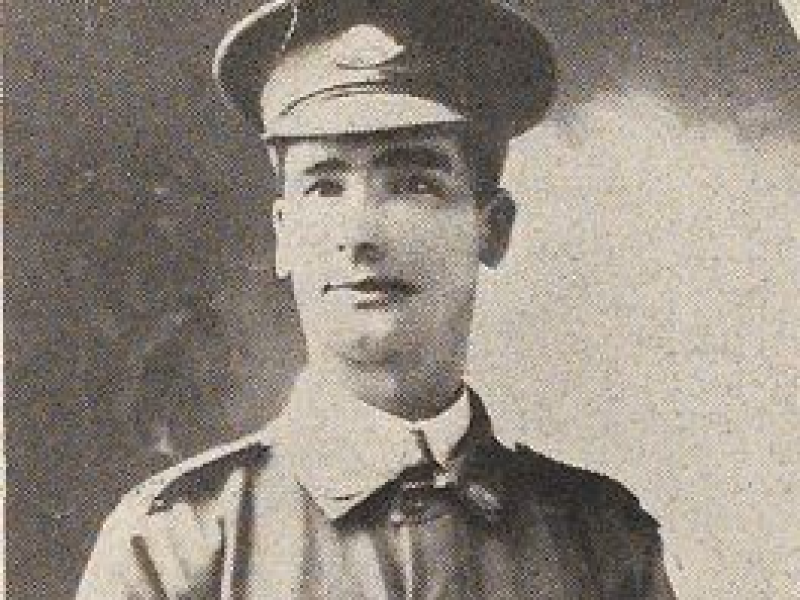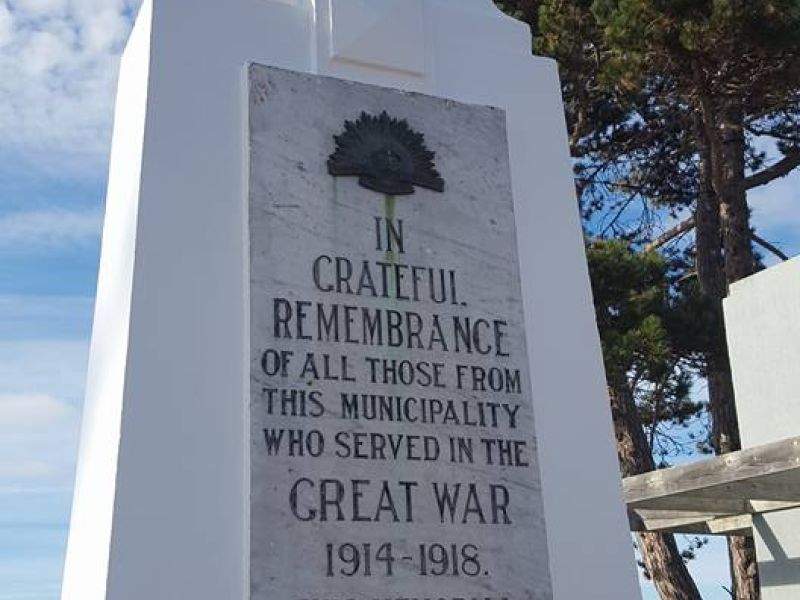Private George Henry Spinks, 52nd Battalion, AIF
George Spinks was born on 22 June 1891 to Charles and Rachel Spinks of Penguin, Tasmania. When George was seven, his 10 year old sister, Elvie, died of a heart condition. George was likely educated locally, and went on to work with his father as a baker.
Spinks enlisted in the Australian Imperial Force in early January 1916. On enlistment, he allotted some of his pay to go to a Miss May Fielding in Penguin but his relationship to her was not clear.
He underwent a period of training in Australia, and went home for final leave in February. He and a number of other recruits, including some of his relatives, were enthusiastically farewelled at a social in Penguin, and left Australia with reinforcements to the 12th Battalion in March 1916.
Private Spinks was first sent to Egypt, and continued on to France where he was transferred to the 52nd Battalion. Not long after his arrival, his battalion moved into position in the lines directly behind the recently captured village of Pozieres.
Spinks’s company moved closer to the front to supply working parties, while the other three companies undertook training. After two days of working in close proximity to the front line, Spinks was wounded in the head and back by shell fragments. His wounds were not serious, however, and he returned to his battalion after treatment.
Roughly three weeks later, in early September 1916, the 52nd Battalion was in an attack to capture the heavily fortified Mouquet Farm to the north of Pozieres.
The attack was launched in the early hours of 3 September. After “fierce and bloody hand to hand conflict”, the battalion was able capture its objectives within hours.
However, other Australian battalions struggled to advance, and the attack ultimately failed, with heavy casualties. It is likely that the 52nd Battalion had also not advanced far enough, and was confused when reporting that it had taken its objectives.
On the morning of the attack, Corporal Richard Barness was wounded and made his way back for treatment. On the way he came across Private George Spinks lying in a shell-hole with “some terrible stomach wounds”.
Barness said “he was quite conscious and did not appear in much pain. I took his equipment off and made him as comfortable as possible. I had to leave him there and go back. I do not think he could live.”
George Spinks never returned to his battalion and probably died on his own in that shell-hole. His body was later recovered, and today he is buried in the Courcelette British Cemetery in the Somme region, France.
He was 25 years old and had been on the front less than 6 months.
Meleah Hampton, Historian, Military History Section
- Australian War Memorial https://www.awm.gov.au/collection/AWM2020.1.1.347

 Australian War Memorial
Australian War Memorial